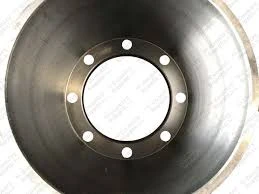
-
 Afrikaans
Afrikaans -
 Albanian
Albanian -
 Amharic
Amharic -
 Arabic
Arabic -
 Armenian
Armenian -
 Azerbaijani
Azerbaijani -
 Basque
Basque -
 Belarusian
Belarusian -
 Bengali
Bengali -
 Bosnian
Bosnian -
 Bulgarian
Bulgarian -
 Catalan
Catalan -
 Cebuano
Cebuano -
 Corsican
Corsican -
 Croatian
Croatian -
 Czech
Czech -
 Danish
Danish -
 Dutch
Dutch -
 English
English -
 Esperanto
Esperanto -
 Estonian
Estonian -
 Finnish
Finnish -
 French
French -
 Frisian
Frisian -
 Galician
Galician -
 Georgian
Georgian -
 German
German -
 Greek
Greek -
 Gujarati
Gujarati -
 Haitian Creole
Haitian Creole -
 hausa
hausa -
 hawaiian
hawaiian -
 Hebrew
Hebrew -
 Hindi
Hindi -
 Miao
Miao -
 Hungarian
Hungarian -
 Icelandic
Icelandic -
 igbo
igbo -
 Indonesian
Indonesian -
 irish
irish -
 Italian
Italian -
 Japanese
Japanese -
 Javanese
Javanese -
 Kannada
Kannada -
 kazakh
kazakh -
 Khmer
Khmer -
 Rwandese
Rwandese -
 Korean
Korean -
 Kurdish
Kurdish -
 Kyrgyz
Kyrgyz -
 Lao
Lao -
 Latin
Latin -
 Latvian
Latvian -
 Lithuanian
Lithuanian -
 Luxembourgish
Luxembourgish -
 Macedonian
Macedonian -
 Malgashi
Malgashi -
 Malay
Malay -
 Malayalam
Malayalam -
 Maltese
Maltese -
 Maori
Maori -
 Marathi
Marathi -
 Mongolian
Mongolian -
 Myanmar
Myanmar -
 Nepali
Nepali -
 Norwegian
Norwegian -
 Norwegian
Norwegian -
 Occitan
Occitan -
 Pashto
Pashto -
 Persian
Persian -
 Polish
Polish -
 Portuguese
Portuguese -
 Punjabi
Punjabi -
 Romanian
Romanian -
 Russian
Russian -
 Samoan
Samoan -
 Scottish Gaelic
Scottish Gaelic -
 Serbian
Serbian -
 Sesotho
Sesotho -
 Shona
Shona -
 Sindhi
Sindhi -
 Sinhala
Sinhala -
 Slovak
Slovak -
 Slovenian
Slovenian -
 Somali
Somali -
 Spanish
Spanish -
 Sundanese
Sundanese -
 Swahili
Swahili -
 Swedish
Swedish -
 Tagalog
Tagalog -
 Tajik
Tajik -
 Tamil
Tamil -
 Tatar
Tatar -
 Telugu
Telugu -
 Thai
Thai -
 Turkish
Turkish -
 Turkmen
Turkmen -
 Ukrainian
Ukrainian -
 Urdu
Urdu -
 Uighur
Uighur -
 Uzbek
Uzbek -
 Vietnamese
Vietnamese -
 Welsh
Welsh -
 Bantu
Bantu -
 Yiddish
Yiddish -
 Yoruba
Yoruba -
 Zulu
Zulu
disc brake and drum brakes difference
Understanding the Differences Between Disc Brakes and Drum Brakes
When it comes to vehicle braking systems, two primary types are commonly discussed disc brakes and drum brakes. Both systems serve the essential function of slowing down or stopping a vehicle, but they operate quite differently and have distinct advantages and disadvantages. Understanding these differences can help you appreciate automotive engineering better and make informed decisions about vehicle maintenance and performance.
Basic Mechanism
The principal difference between disc and drum brakes lies in their design and the way they function.
Disc Brakes This braking system consists of a flat, round metal disc, known as a rotor, which is attached to the wheel. When the driver presses the brake pedal, hydraulic fluid is sent to calipers that hold brake pads. These pads pinch the rotor, creating friction that slows the wheel down. Disc brakes are typically found on the front wheels of many vehicles, but they are also becoming increasingly common on the rear wheels of higher-performance cars.
Drum Brakes In contrast, drum brakes consist of a cylindrical drum that rotates with the wheel and has brake shoes inside it. When the brake pedal is pressed, hydraulic pressure forces these shoes against the inside of the drum, generating friction and reducing the wheel's speed. Drum brakes have traditionally been used in the rear of many vehicles due to their effectiveness and lower production costs.
Performance
When discussing performance, disc brakes generally have the edge over drum brakes in several areas
1. Cooling Due to their open design, disc brakes are better at dissipating heat, making them less prone to brake fade, especially during prolonged use or extreme conditions. This heat dissipation is crucial in high-performance situations, such as racing or driving downhill.
disc brake and drum brakes difference

2. Wet Performance Disc brakes tend to perform better in wet conditions. Water from rain or snow can cause drum brakes to become less effective, as the moisture can lead to reduced friction. Disc brakes, on the other hand, clear water more effectively through their design.
3. Maintenance Generally, disc brakes are easier to inspect and replace than drum brakes. The open nature of disc systems allows for better visibility and access, simplifying routine maintenance.
Weight and Cost
While disc brakes provide many performance advantages, they tend to be more expensive and heavier than drum brakes. This is one reason why many economy vehicles still utilize drum brakes on their rear wheels. Additionally, the weight of disc brakes can affect fuel efficiency in smaller vehicles, where efficiency is crucial.
Applications
In modern automotive design, there has been a noticeable shift towards using disc brakes in both the front and rear of vehicles. High-performance cars, sports cars, and even many everyday sedans are increasingly equipped with disc brakes due to their superior braking characteristics. However, drum brakes are still widespread in smaller, budget-friendly vehicles and in specific applications, such as trailer braking systems, where their simplicity and cost-effectiveness are advantageous.
Conclusion
Both disc brakes and drum brakes have their unique strengths and weaknesses. Disc brakes excel in performance, heat dissipation, and maintenance, making them popular in modern vehicles, especially for those seeking enhanced safety and high performance. Conversely, drum brakes continue to offer a cost-effective and robust solution for specific applications.
Understanding these differences is essential for anyone interested in automotive technology and maintaining vehicles. As you navigate the world of cars, knowing when and where to apply each brake system can enhance your driving experience and ensure safety on the road. Whether you’re a casual driver or an automotive enthusiast, this knowledge helps you appreciate the intricate balance of design and function within your vehicle’s braking system.
-
What Are Drum BrakesNewsJul.07,2025
-
Understanding Brake Drum MaterialNewsJul.07,2025
-
Semi-Trailer Brake Drum: A Key Component for Extreme Loads and Long-Distance TransportNewsJul.07,2025
-
Drum Brake Pads for SaleNewsJul.07,2025
-
Brake Drums for SaleNewsJul.07,2025
-
Brake Drum ManufacturerNewsJul.07,2025
-
Aluminum Brake Drums: The Future of High-Performance CarsNewsJul.07,2025
